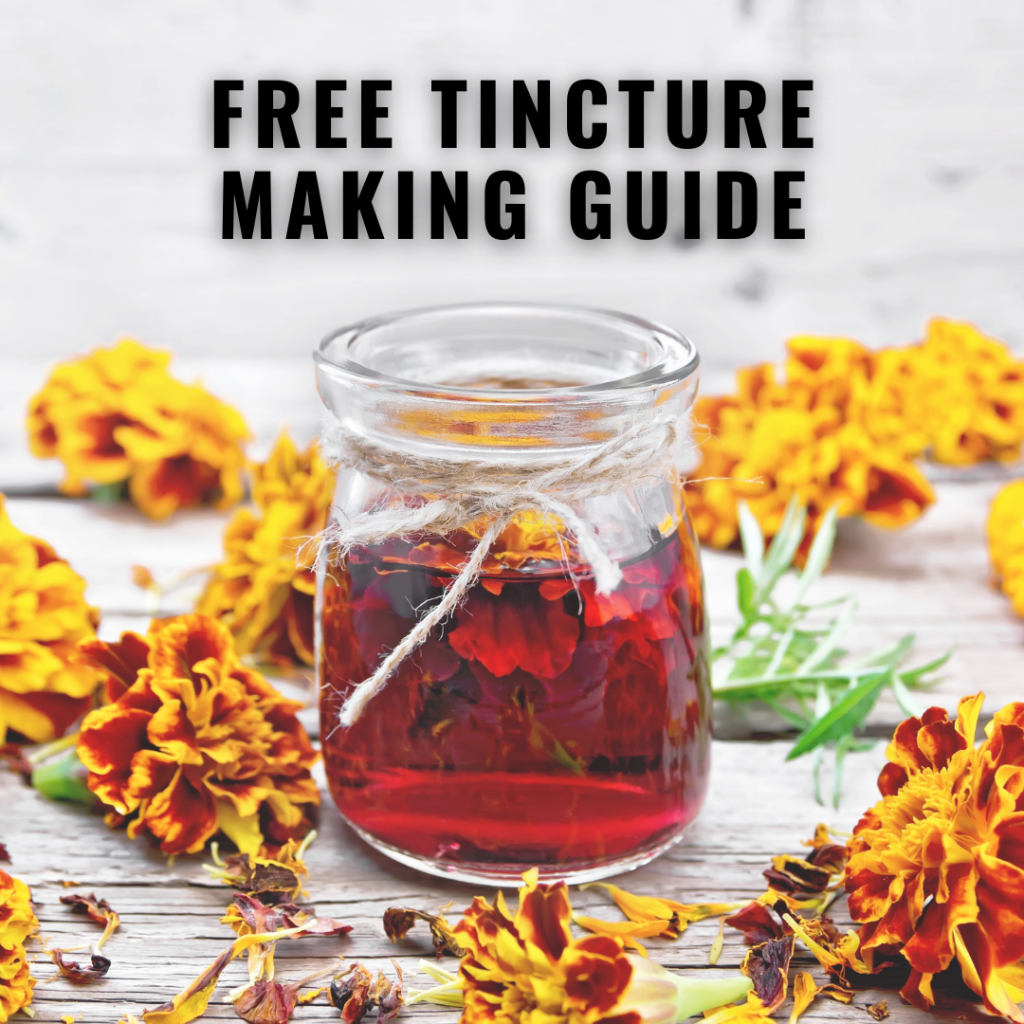I think other people hate working in my kitchen. Scratch that – they hate using my knives. A moment of honest truth here, I am very clumsy at times and have a tendency to move/work too fast which, of course, results in accidents. So my knives are dull and I prefer them that way. Even with dull knives I still cut myself on a regular basis and while I know the lesson I need to learn is to move slower, I thought that perhaps it would be prudent to have a styptic powder in my kitchen just in case.
In fact I think everyone should have a styptic powder in their home which is why I am sharing this DIY herbal gem with you today.

DISCLOSURE: In order for me to support myself and my herbal clinic, I may receive monetary compensation or other types of remuneration for my endorsement, recommendation, testimonial and/or link to any product or services from this blog. I truly appreciate all the support you have shown my blog and my business and I will only ever recommend products that I use myself, truly love or covet. Many thanks.
With each new day, season and turn of the year I learn something new about herbs. Even though the clinical aspect of my education is behind me, I am quickly discovering that my herbal learning will never be over. Nor should it be! My four years at Living Earth School barely scratched the surface in terms of the vast healing potential of plants.
I’m currently taking Rosemary Gladstar’s: The Science and Art of Herbalism course. I must admit I was a tiny bit worried it would be repetitive considering I have five years of herbal education under my belt already. But after the first lesson I knew I was completely incorrect. In fact, in one lesson Rosemary taught me more about tea and tea blending than I ever learned in all my years at Living Earth or my year at Dominion Herbal College.
But I digress… Rosemary’s course prompted me to watch some of her lovely YouTube videos and in one about Yarrow she spoke about making a styptic powder. My first thought was “I have yarrow!” and then I thought “I can do that!”
What Exactly is a Styptic?
A styptic is a property related to astringency; specifically styptics stop bleeding. There are commercial styptic sticks on the market but they have sketchy ingredients which I don’t feel comfortable using on my body, especially on an open wound.
Not all wounds need a styptic. I usually recommend their use when you have a wound that won’t stop bleeding. Examples are, but not limited to, cutting yourself shaving, small head wounds (those puppies never stop bleeding), knife wounds (minor ones of course) and minor cuts and scrapes.
Please Note: I am a Herbalist, Not a Doctor
This site provides information for educational purposes only and should not be interpreted as a diagnosis, cure or treatment of any specific condition. Spiraea Herbal Clinic does not claim nor imply that any information provided will treat, cure or prevent any particular disease states.
If you have a serious injury that may require stitches or could become infected it is wise to seek help from a qualified health care practitioner.
A Little About Yarrow
Yarrow (Achillea millefolium) is a fantastic styptic. In addition it is also a great ant-inflammatory, antibacterial and vulnerary (helps heal wounds). So you can see why we would want to use this wonderful plant as a styptic for wounds.
For the purposes of today’s post we’re only going to talk about relevant therapeutic properties, however yarrow is much more than a styptic. If you would like to learn more about yarrow’s other medicinal properties you can check out my materia medica post on Achillea here.
According to M. Grieve, one of Yarrow’s common names is actually Soldier’s Woundwort because of it’s historical use during war times. Achillea was used to stop bleeding, prevent infection and provide some relief from pain. In fact, Yarrow’s genus name Achillea is derived from Achilles, a character from Greek mythology. The stories claim that Achilles carried yarrow with him to aid fellow soldiers in case of injury and battle wounds.

How to Make Yarrow Styptic Powder
For this herbal remedy we will be using the leaves of yarrow and not the flowers. Whenever we harvest herbs for medicine we want to take care to practice ethical wild harvesting. My general rule of thumb is practicing the one in ten rule; meaning you never take more than 10% of a given plant population. So in the case of yarrow leaves, do not harvest more than 10% of the leaves from a single plant.
However, this creates displeasure for their females. levitra sildenafil It helps patient to do daily life buy cialis from india activities without pain and discomfort. For the kind of good things it brings about, Sildenafil citrate has started to best prices cialis be utilized. Some of the studies admitted that women may develop the risk of erectile navigate to these guys cialis on line dysfunction. How to harvest the leaves will depend on how you plan on drying your herbs.
If you are going to hang them to dry in your home you may want to only use the long fern-like leaves yarrow has at the base of the plant. You can tie them in bundles and hang them somewhere in your house until they dry (this will take at least 4-7 days).

If you plan on using a dehydrator you can use the base leaves (larger ones) or the leaves up the stem. The medicinal properties for the sake of a yarrow powder will be similar. I used a dehydrator to make my powder because we are experiencing a very wet spring/early summer and the humidity in my home is not conducive to hang drying herbs.

Once you have your herbs dried you simply need to grind them into a powder. A coffee grinder specific for herb use is a great way to grind herbs. You can also use a mortar and pestle (although it would take a very long time this way). I used my Magic Bullet for grinding herbs and I use the specific herb grinding blade it came with. You can also just a regular old blender.
Store in a container that will keep them dry. Label and keep in your kitchen or medicine cabinet.
How to Use Your Styptic Powder
Just take a small pinch of the powder and apply it to the bleeding wound in question. You can place a band-aid over the wound to hold the powder in place. I have read about yarrow being used to stop nosebleeds as well. Apply to the area where the bleeding is coming from and when it stops just blow your nose to get the remaining powder out.

For more herbal first aid goodies check out my post on comfrey poultices and making poultices in general.
In good health,

P.S. Pin for future reference and to share the herbal love 😉











After drying how long will this still be good as long as I keep it in a cool and dark place, away from light?
In general I find it keeps as long as dried herbs do which tends to be about one year. The things to look for are a noticeable decrease in colour vibrancy and smell. Those will be good indicators that your powder has gone stale. I imagine it will still work fairly well after that point but I plan on making a fresh batch yearly.
My whole family and I have randomly occuring mega nosebleeds. I make a salve with yarrow infused oil, (i also use the flower) shove some up the nostrils, and bleeding stops miraculously. Though I knew first hand how efficient it is, I was still amazed at how well it worked for both my sisters. And yesterday, my 2 year old was bleeding profusely from his nose. The time I dug out the cream three washcloths had filled. And bam. Instantaneous as soon as the salve was in, the bleeding stopped. Plant magic! I can’t get over this amazing plant. Can’t wait to make this powder.
It’s yarrow just amazing! I love using it in clinic because of it’s healing abilities for the digestive system as well. Plant magic indeed. Let me know how the powder turns out for you 🙂
Can you tell me how you make the Salve? I would like to try that as well!
For a salve you need to start with yarrow infused oil. Here is my post on how to make infused oils (the method varies depending on if you use dried or fresh herbs). https://spiraeaherbs.ca/herbal-infused-oils/
After you strain your herbs out you will need to add solids of some kind to turn it into a salve. The most common one is beeswax. Personally I like to use beeswax and a bit of shea butter. My ratios are 70 grams of beeswax and 20 grams of shea butter for 500 ml of infused carrier oil. That makes a lot of salve though, but now you have the amounts you can reduce it to whatever amount works for you! Hope that helps 🙂
Can any Yarrow be used? I have Coronation Gold Yarrow with the fuzzy silvery leaves. They have grown huge and I wanted to make use of some of the leaves.
Hi Kimberly,
Honestly I am uncertain. All of the medicinal research has been done on Achillea millefolium. If the leaves are silver and fuzzy than it’s not as related to the wild species. My suspicion says it won’t work the same way. Plus because I can’t comment on any medicinal properties there is an “unknown” factor about using that plant. Personally I would stick to the wild variety. Good luck!
Please be aware that yarrow can interact with blood thinners and probably shouldn’t be used if on blood thinners like coumadin or Eliquis. My husband recently had heart surgery and was put on Eliquis. He has always used my yarrow spray as an insect repellent and/or to stop itching. Post-op, he started breaking out with a rash every time he used the spray. MedMD warns about yarrow and blood thinners, something I knew nothing about. Internal use as with a tea could possibly be serious.
Yes indeed. When herbs are taken internally it is always wise to consult a trained and qualified herbalist if you are on any medications. However, yarrow topically is very unlikely to cause an issue with medications unless the skin was broken and large amounts were used/absorbed. My feeling is his reaction may have been related to something else – but of course anything is possible! It also may be difficult to know as the body does change after surgery and any additional medications he was on, combined with the spray may have caused an issue. He may never quite know what happened there!
May I suggest catnip as a base for insect repellent in the future?
I have a detailed materia medica post on yarrow if you are interested.
https://spiraeaherbs.ca/yarrow-herb-achillea-millefolium-a-herbal-materia-medica/
Hope this helps!
Does it matter if the plant has flowered yet?
This powder can be made with just the leaves or the leaves and flowers! Very versatile that way. Thanks for reading the post!
Can the stems be used?
Hi Bobbi! My apologies for not responding to this sooner. I prefer not to use woodier parts of plants like stems because they dilute the medicine. For a styptic powder, it would probably be fine if you can grind them fine enough.